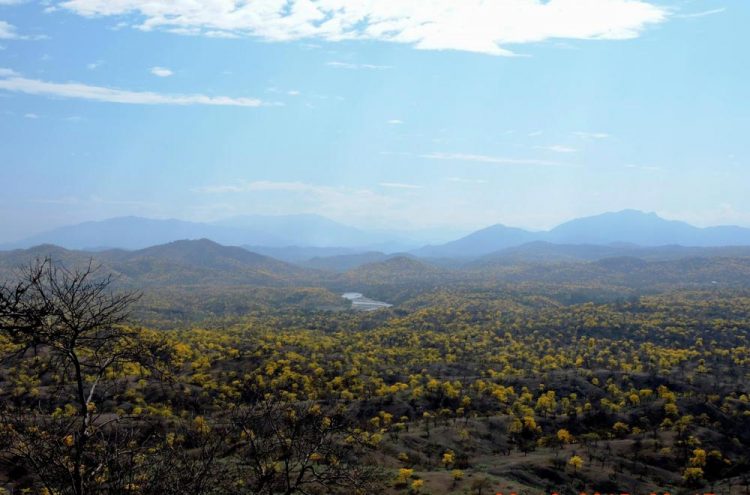The disappearance of common species

Most of Ecuador's dry forests are located in the southwest of the country, in the Tumbes-Chocó-Magdalena region. Credit: Photo: P. Hildebrandt/ TUM Usage Restrictions: Free for use in reporting on TU München with the copyright noted
Together with their colleagues from the Senckenberg Nature Research Society, scientists of the Technical University of Munich (TUM) were able to show that currently widespread insects are threatened with a serious decline in species diversity in the near future.
The research team lists the fragmentation of habitats and the intensification of agriculture as reasons for the decline of these “generalists.” According to the study, published today in the scientific journal Biological Conservation, the genetic diversity among the examined butterfly species is also expected to decline sharply in the future – as a result, the insects will become more sensitive to environmental changes.
The number of insects continues to decrease – in some regions, a dramatic decline by up to 75 percent has been recorded in recent decades. “Until now, we assumed that it is primarily the specialists among the insects, i.e., animals that depend on a specific habitat, that are threatened with extinction,” explains Professor Dr. Thomas Schmitt, director of the Senckenberg German Entomological Institute in Müncheberg, and he continues, “In our recent study, we were able to show that even so-called “ubiquitous species” will be facing massive threats in the future.”
In its study, the team of scientists explains that species with low habitat requirements depend on the exchange between different populations. “Our studies clearly show that widespread species have a much more diverse intraspecific gene pool than species that are adapted to a specific habitat,” explains Dr. Jan Christian Habel of the Technical University in Munich, and he continues, “Once these animals – due to the fragmentation of their habitats – lose the opportunity to maintain this genetic diversity by means of exchange, they will no longer be able to adapt to changing environmental conditions in the future.”
The insect researchers from Munich and Müncheberg refer to a “temporal shift in the potential causes for the decline of species.” Initially, it is primarily those insects that specialize in a particular ecosystem, e.g., the Mountain Apollo (Parnassius apollo) butterfly, which will be threatened by the loss of high-quality habitats. But over time and with the further deterioration of habitats as well as the collapse of entire habitat networks, the threat to widespread, “undemanding” species such as the Pearly Heath (Coenonympha arcania) also increases.
“In terms of practical nature conservation, these results signify that in the future it will no longer be sufficient to preserve small, isolated reserves – while these benefit specialized species with a simple genetic structure, the bulk of species that depend on an exchange between local populations will lose out in the medium to long term,” predicts Schmitt, and he adds in closing, “This will lead to a further decline of numerous insect species – with dramatic consequences for entire food webs and ecosystems.”
###
Publication:
Habel JC, Schmitt T: Vanishing of the common species: Empty habitats and the role of genetic diversity. Biological Conservation 1/2018. DOI: https:/
Contact:
Dr. Jan Christian Habel
Technical University of Munich
Chair for Terrestrial Ecology
Phone: 49-8161-71-4861
Mail: janchristianhabel@gmx.de
Media Contact
All latest news from the category: Ecology, The Environment and Conservation
This complex theme deals primarily with interactions between organisms and the environmental factors that impact them, but to a greater extent between individual inanimate environmental factors.
innovations-report offers informative reports and articles on topics such as climate protection, landscape conservation, ecological systems, wildlife and nature parks and ecosystem efficiency and balance.
Newest articles

Trotting robots reveal emergence of animal gait transitions
A four-legged robot trained with machine learning by EPFL researchers has learned to avoid falls by spontaneously switching between walking, trotting, and pronking – a milestone for roboticists as well…

Innovation promises to prevent power pole-top fires
Engineers in Australia have found a new way to make power-pole insulators resistant to fire and electrical sparking, promising to prevent dangerous pole-top fires and reduce blackouts. Pole-top fires pose…

Possible alternative to antibiotics produced by bacteria
Antibacterial substance from staphylococci discovered with new mechanism of action against natural competitors. Many bacteria produce substances to gain an advantage over competitors in their highly competitive natural environment. Researchers…





















